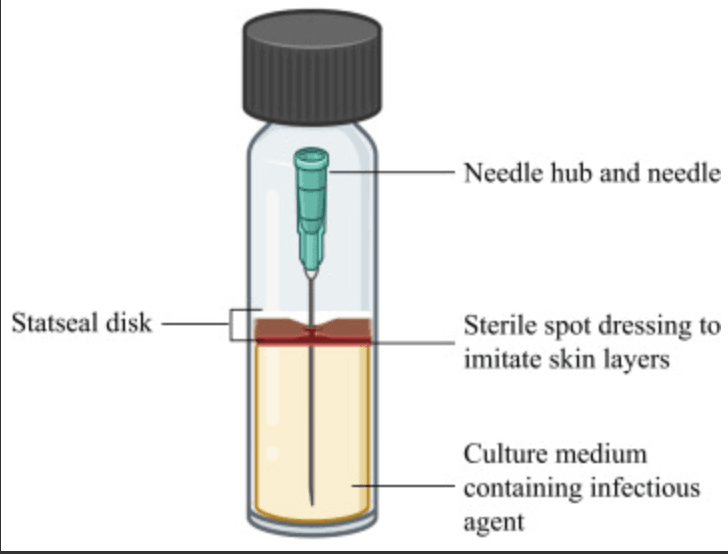Revolutionizing Vascular Access: The Potassium Ferrate Haemostatic Disc
Posted
on 5 March 2024
)
Introduction:
Vascular access devices (VADs) play a crucial role in managing acute and chronic medical conditions. However, they are often associated with risks such as bleeding and infections. This study evaluated the antimicrobial potential of the potassium ferrate haemostatic disc as an alternative to traditional methods.
Aim:
The aim was to assess the effectiveness of the potassium ferrate disc against Gram-positive (Staphylococcus aureus), Gram-negative (Klebsiella pneumoniae, Pseudomonas aeruginosa), and Candida albicans, compared to the commonly used chlorhexidine gluconate (CHG) disc, especially in cases with a higher risk of bleeding.
Methods and Results:
Using in-vitro testing, we found that the potassium ferrate disc inhibited microbial growth for strains commonly associated with VAD-related infections. The haemostatic disc demonstrated dual benefits, providing both haemostatic and antimicrobial actions. The study also compared the potassium ferrate disc with CHG, showing promising results, particularly against Gram-negative bacteria.
Conclusion:
The results suggest that the potassium ferrate haemostatic disc could be a game-changer in vascular access management. With its ability to address bleeding and inhibit microbial growth simultaneously, it offers a unique advantage over traditional methods. Further exploration of this innovative solution is warranted for enhanced patient care.
Read More: https://www.journalofhospitalinfection.com/article/S0195-6701(23)00414-0/fulltext#%20
Authors:
K.L. Gough, T.R. Dargaville, A.J. Ullman, N. Marsh, E.S. Pelzer
Vascular access devices (VADs) play a crucial role in managing acute and chronic medical conditions. However, they are often associated with risks such as bleeding and infections. This study evaluated the antimicrobial potential of the potassium ferrate haemostatic disc as an alternative to traditional methods.
Aim:
The aim was to assess the effectiveness of the potassium ferrate disc against Gram-positive (Staphylococcus aureus), Gram-negative (Klebsiella pneumoniae, Pseudomonas aeruginosa), and Candida albicans, compared to the commonly used chlorhexidine gluconate (CHG) disc, especially in cases with a higher risk of bleeding.
Methods and Results:
Using in-vitro testing, we found that the potassium ferrate disc inhibited microbial growth for strains commonly associated with VAD-related infections. The haemostatic disc demonstrated dual benefits, providing both haemostatic and antimicrobial actions. The study also compared the potassium ferrate disc with CHG, showing promising results, particularly against Gram-negative bacteria.
Conclusion:
The results suggest that the potassium ferrate haemostatic disc could be a game-changer in vascular access management. With its ability to address bleeding and inhibit microbial growth simultaneously, it offers a unique advantage over traditional methods. Further exploration of this innovative solution is warranted for enhanced patient care.
Read More: https://www.journalofhospitalinfection.com/article/S0195-6701(23)00414-0/fulltext#%20
Authors:
K.L. Gough, T.R. Dargaville, A.J. Ullman, N. Marsh, E.S. Pelzer
| Tags:AVATAR |








